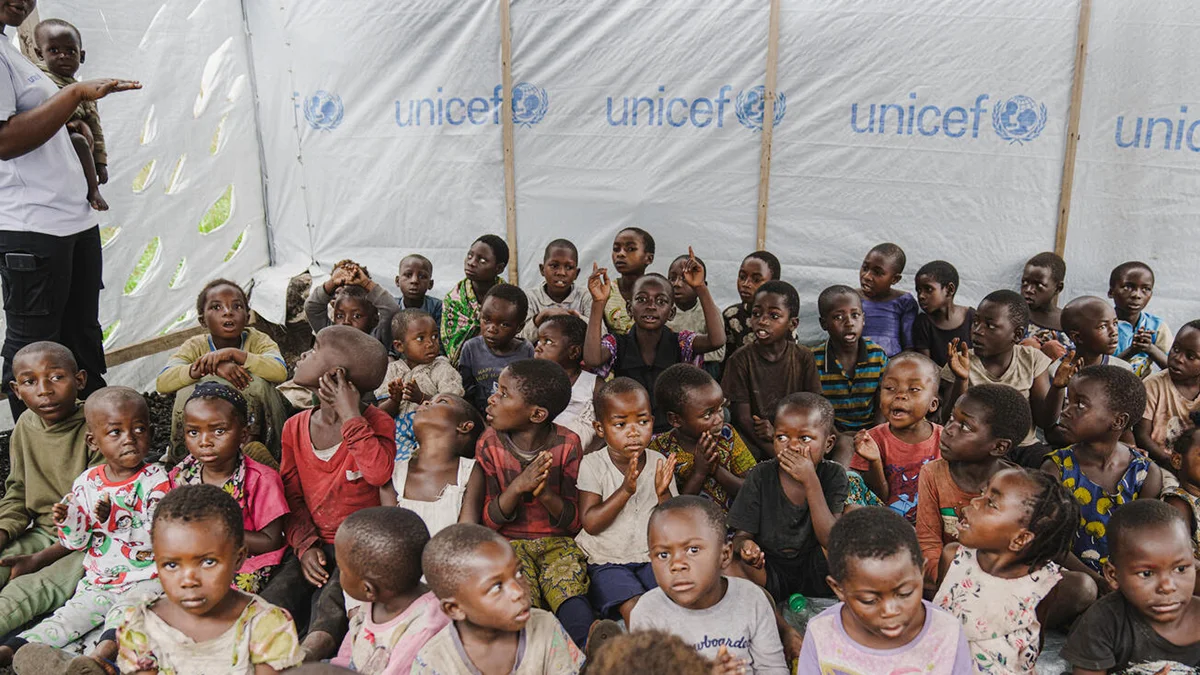The escalating violence and displacement in the east of the Democratic Republic of Congo is preventing hundreds of thousands of children from attending school. For many, there is a risk that they will never return to school.
Even before the latest escalation of the conflict, the education system in eastern DRC was under immense strain, due, in part, to the high number of displaced people. More than 6.5 million people, including 2.6 million children, are currently displaced in the region.
Fierce conflict since the start of the year has forced more than 2,500 schools and learning spaces in North Kivu and South Kivu, including those in displacement camps, to close. With schools shuttered, damaged or destroyed, or turned into shelters, 795,000 children are now being deprived of education – up from 465,000 in December 2024. Including Ituri Province, over 1.6 million children in eastern DRC are now out of school.
“This is a desperate situation for children,” said Jean Francois Basse, UNICEF's acting Representative in DRC. “Education – and the support systems it provides – is what children need to retain a sense of normalcy and to recover and rebuild after this conflict.”
While schools in Goma re-opened on 9 February, very few pupils were in attendance, with parents voicing fears that the security situation remained too dangerous.
In times of crisis, schools play a crucial role in maintaining stability and providing a safe space that protects children from potential recruitment by armed groups and sexual violence. Schools can also offer children who have experienced trauma access to psychosocial support.
UNICEF is supporting the continuity of education in eastern DRC by working with its partners to set up temporary learning spaces and distribute school materials along with hygiene and sanitation kits. UNICEF is also exploring using radio-based education and accelerated learning programmes to reach the most remote and marginalised children. With mines and unexploded ordinance left around Goma – including in or in close proximity to schools – UNICEF will also lead on mine risk education.
"For the past two years we have invested heavily in learning structures at displacement sites around Goma,” said Basse. “But these are now largely empty, and we are extremely worried that children who are displaced once more may never return to school.”
As part of its overall humanitarian appeal, UNICEF is seeking US$52 million to meet the urgent educational needs of 480,000 children.
UNICEF is also calling on parties to the conflict to respect education facilities and other civilian objects, in line with their obligations under international law, and immediately end the military use of any education facility.






